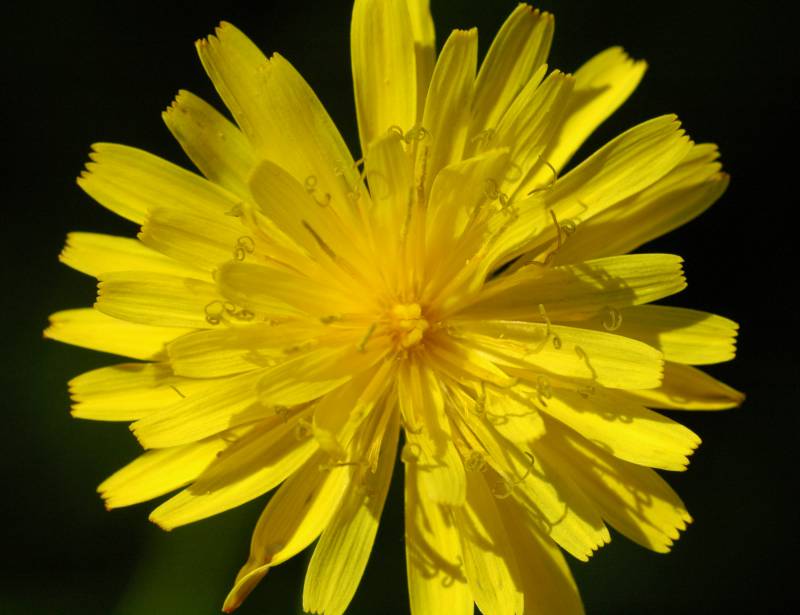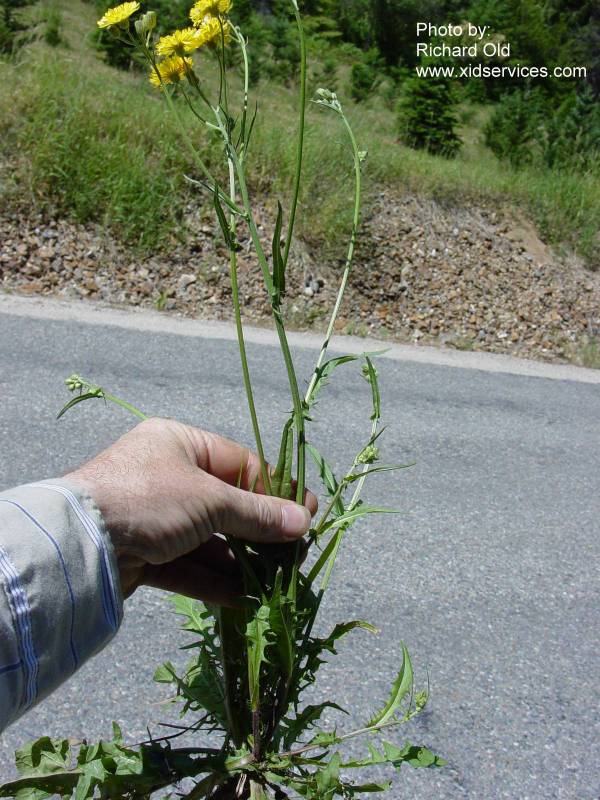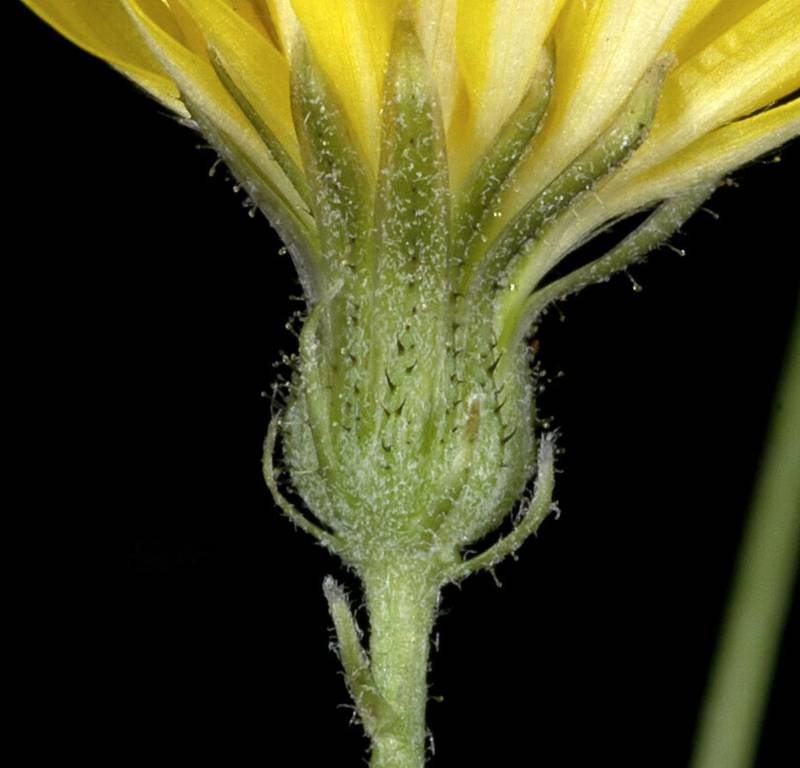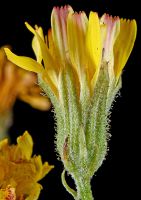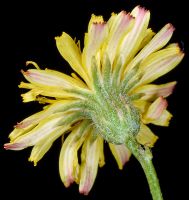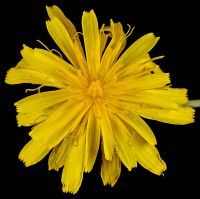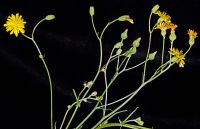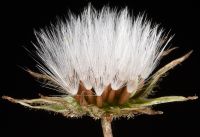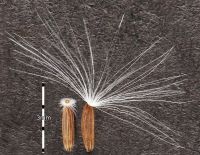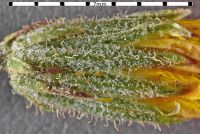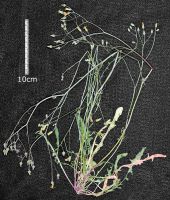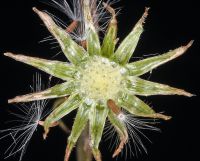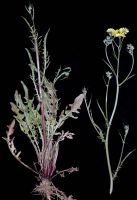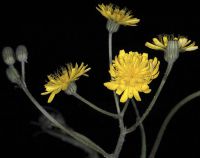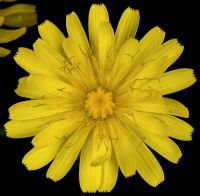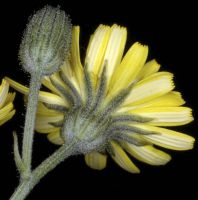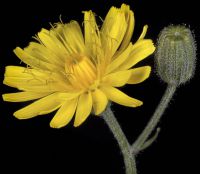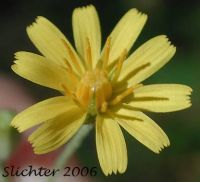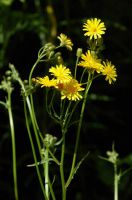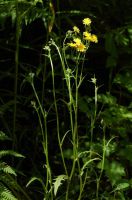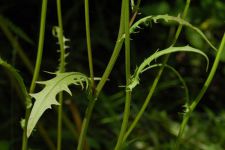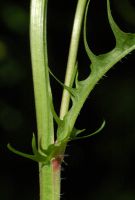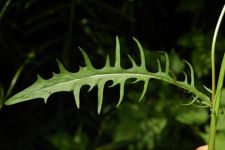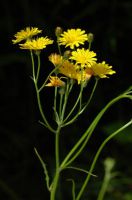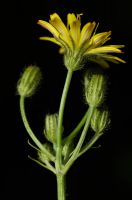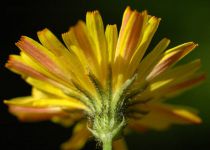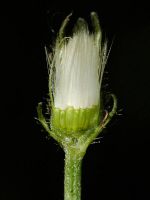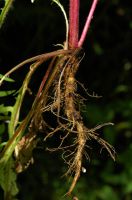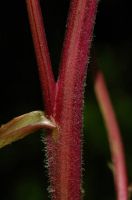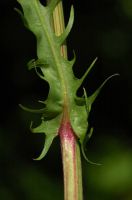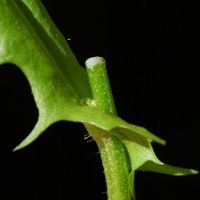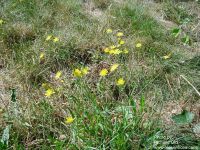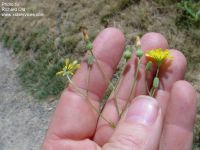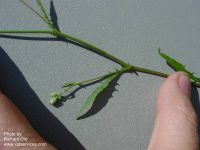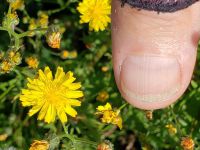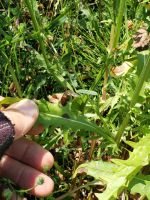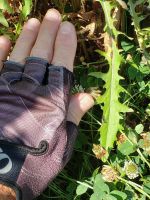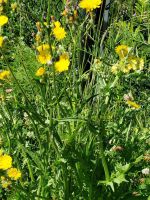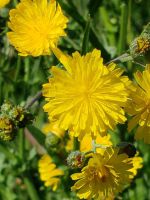Distribution: Occurring chiefly west of the Cascades crest and east in the Columbia River Gorge in Washington; Alaska to California, east across most of North America to the Atlantic Coast.
Habitat: Roadsides, fields, ditches, wastelots, and other disturbed, open areas at low elevation.
Flowers: May-November
Origin: Introduced from Europe
Growth Duration: Annual, Biennial
Conservation Status: Not of concern
Pollination: Bumblebees, bees, butterflies, flies, beetles, wasps, apomixis?
Branched annual, 1-9 dm. tall, often covered with short, stiff, pointed yellow hairs throughout, with milky juice.
Basal leaves petiolate, the blade lanceolate to oblanceolate, with fine teeth to pinnatifid, 3-30 cm. long and 5-45 mm. wide; cauline leaves reduced upward, becoming sessile, narrowly lanceolate, clasping and auriculate.
Heads several or numerous, 20-60 flowered; involucre 5-8 mm. high, its inner bracts 8-16, white-woolly and often glandular-bristly with black hairs, becoming spongy-thickened on the back; outer bracts linear, less than half as long as the inner.
Achenes tawny, 1.5-2.5 mm. long, tapered at both ends.
Publication: Linnaea. 14: 657. 1840.
PNW Herbaria: Specimen records of Crepis capillaris in the Consortium of Pacific Northwest Herbaria database
WA Flora Checklist: Crepis capillaris checklist entry
OregonFlora: Crepis capillaris information
E-Flora BC: Crepis capillaris atlas page
CalPhotos: Crepis capillaris photos

